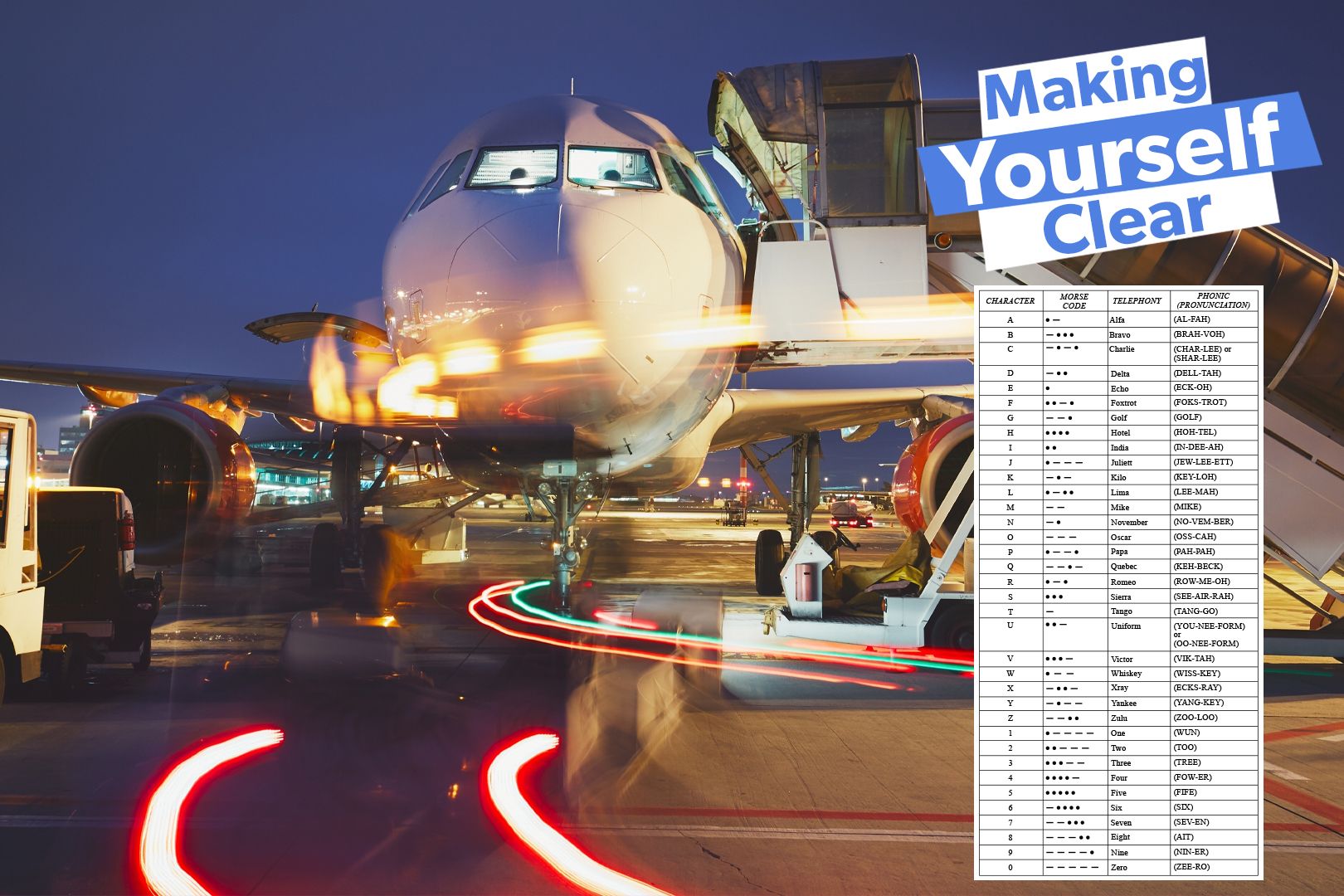Summary The phonetic alphabet aids global communication, ensuring standardization across aviation. Numeric standards complement the alphabet, improving clarity and efficiency in transmission. The pronunciation guide confirms the importance of the phonetic alphabet for effective radio communication.
The phonetic alphabet is a staple of aviation. In many ways, aviation and radiotelephony grew together during the World War era, and radio phonetics and aviation (as well as naval operations) are inextricably linked. The phonetic alphabet is the lifeblood of controller/pilot communications, and every member of the flying community worldwide learns the phonetic alphabet in basic training.

This article notes the importance of the phonetic alphabet (as well as numbers) to aviation. Origin of the phonetic alphabet The currently used and globally-accepted phonetic alphabet traces its origins back to 1951. As the world emerged from the Second World War, military aviation gave way to civil aviation as the primary source of air traffic.
There was a great deal of dissatisfaction with language barriers and the unintelligibility of the phonetics that were carry-overs from wartime. Accordingly, the newly-formed International Civil Aviation Organization (ICAO) proposed a new universal phonetic alphabet. Representatives from ICAO worked with the well-known linguistics professor Jean-Paul Vinay from 1948-1949 to form the new phonetic alphabet.
The project's goal was to create an alphabet with similar words in the trade languages of the time: English, French, and Spanish. The words used needed to also be "live" in each of the respective languages. The ICAO, and the many countries that abide by its standardization, first adopted the Vinay solution in 1951.
A few changes were made to the letters C, M, N, U, and X, and by 1956 the alphabet was formed into what is still in use today. A look at how and why pilots communicate using the phonetic alphabet. The Numbers The phonetic alphabet isn't the industry's only linguistic specialty.
Some numbers are also pronounced in a way that delineates them from similar-sounding words. Specifically, three, five, and nine and pronounced "tree," "fife," and "niner." Other numbers are pronounced commonly, but many pilots and controllers (in the US, at least) don't bother with these three unique pronunciations because radios transmit more clearly than they did decades ago when the pronunciations were introduced for the sake of clarity.
Flight numbers read over the radio are always pronounced in "group form." That is, two numbers are grouped whenever possible. Flight 3447 would be pronounced as "flight thirty-four forty-seven.
" When the flight is three numbers, such as 713, the last two numbers are grouped: "Flight seven thirteen." Flight numbers with one or two digits are read normally in the phonetic world outside of aviation. Pilots and controllers will have fun with call signs occasionally.
For instance, flight 888 might be referred to as "flight triple eight" by some parties. Want answers to more key questions in aviation? Check out the rest of our guides here . The phonetic alphabet and established numerical standards create a universal, intelligible method for pilots and controllers to communicate the world over.
Language barriers still exist, but the standard phraseology for letters and numbers significantly aids in creating a shared understanding between the sender and the receiver of a radio message. The result is a safer and more efficient global airspace system for pilots and passengers. Controllers will be scheduled shifts between 10 and 12 hours apart when the agreement goes into effect.
Phonetic Alphabet pronunciation The International Ship Engineering Service Association (ISES) notes the importance of the use of the NATO Phonetic Alphabet by stating, "The NATO Phonetic Alphabet substitutes a code word acrophonically for each letter of the English alphabet, so that letters and numbers would have distinct names that would be most easily understood by those who exchange voice messages, regardless of language/ pronunciation differences or the quality of the communication channel." Skybrary shows the correct pronunciation of the Phonetic Alphabet: L/N Word Pronunciation Morse A Alfa AL FAH .- B Bravo BRAH VOH -.
.. C Charlie CHAR LEE or SHAR LEE -.
-. D Delta DELL TAH -..
E Echo ECK OH . F Foxtrot FOKS TROT ..
-. G Golf GOLF --. H Hotel HOH TEL .
...
I India IN DEE AH .. J Juliett JEW LEE ETT .
--- K Kilo KEY LOH -.- L Lima LEE MAH .-.
. M Mike MIKE -- N November NO VEM BER -. O Oscar OSS CAH --- P Papa PAH PAH .
--. Q Quebec KEH BECK --.- R Romeo ROW ME OH .
-. S Sierra SEE AIR RAH ..
. T Tango TANG GO - U Uniform YOU NEE FORM or OO NEE FORM ..
- V Victor VIK TAH ...
- W Whiskey WISS KEY .-- X X-Ray ECKS RAY -..
- Y Yankee YANG KEY -.-- Z Zulu ZOO LOO --..
1 One WUN .---- 2 Two TOO ..
--- 3 Three TREE ...
-- 4 Four FOW ER ...
.- 5 Five FIFE ..
...
6 Six SIX -...
. 7 Seven SEV EN --..
. 8 Eight AIT ---..
9 Nine NIN ER ----. 0 Zero ZE RO ----- . Decimal DAY SEE MAL Hundred HUN DRED Thousand TOU SAND The ongoing ATC staff shortages could potentially worsen aviation safety.
.



















